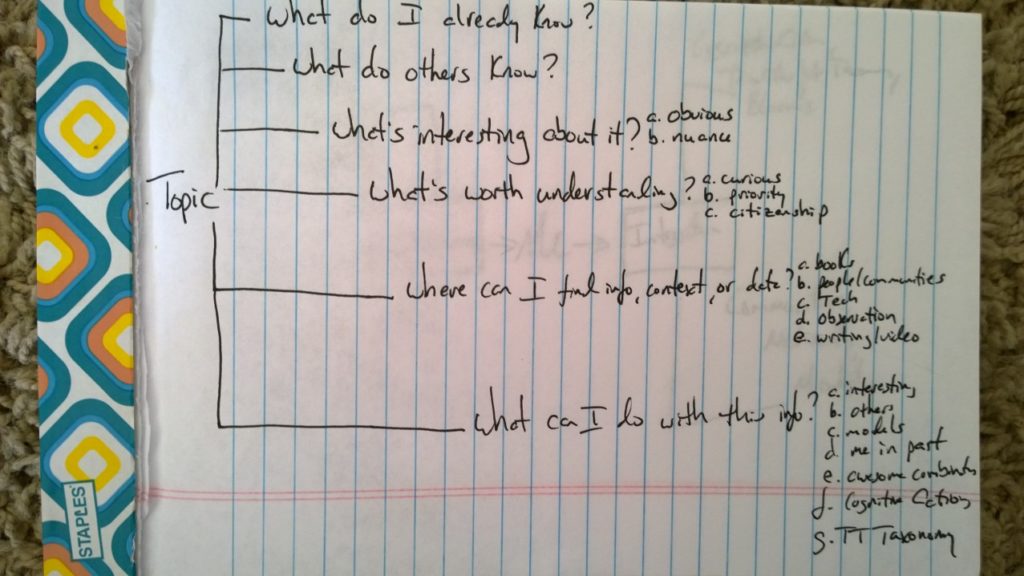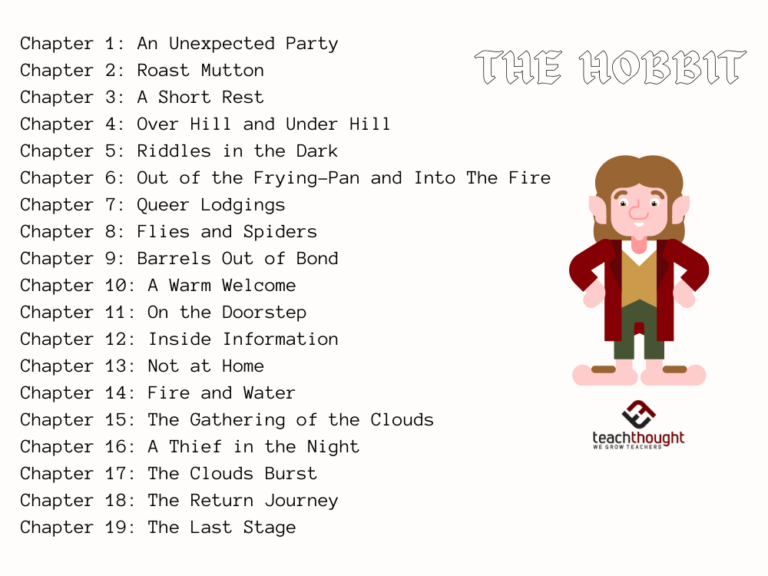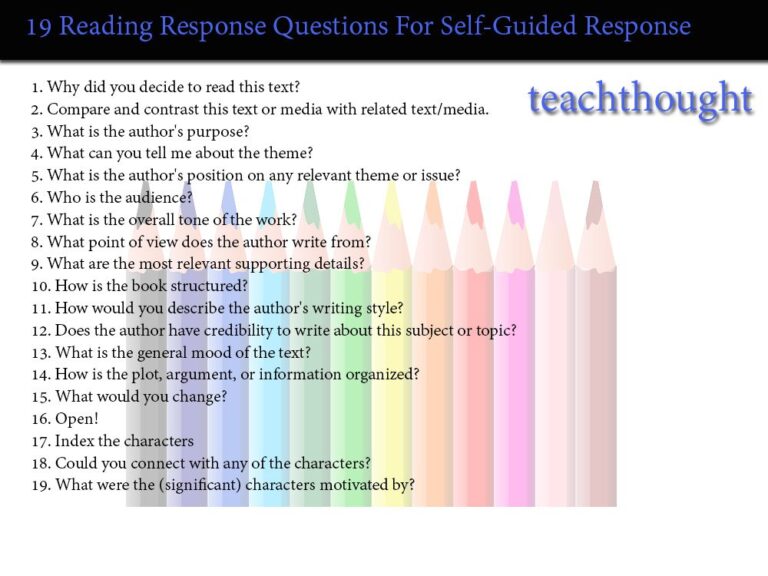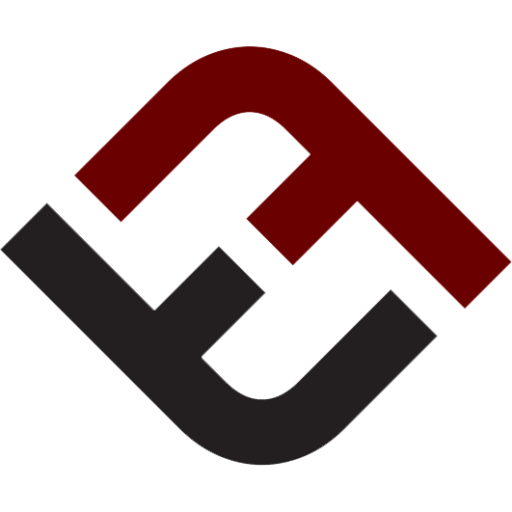



The Hobbit is about Bilbo’s maturation from a ‘do-nothing’ to a courageous adventurer who risks everything for the benefit of others.
Possibility Learning: Learning Though Endless Combinations Pick and choose one or more of the following “pieces” to use and/or combine to create a learning experience that’s meaningful to you, and results in something interesting, playful, and uniquely “you. Try to start with yourself: Who are you, what are you a part of, and what does…

Students needed to see what a ‘quality’ reading response looked like. Once these questions were demystified a bit, it was all downhill.

Reading Competencies Idea 1. Identify and analyze a theme or thesis and its development (e.g, the use of supporting details, rhetorical techniques, literary devices, writing style, tone, mood, modalities, etc.) 2. Recognize how a theme or thesis or media fits into larger contexts (cultural, literary, digital, etc.) 3. Recognize and explain the features, nuance, history,…
30 Universal Strategies For Learning Challenge something Make an observation Draw a conclusion Question something Revise a question based on observation & data Critique something Explain the significance Revise something Transfer a lesson or philosophical stance from one situation to another Improve a design Identify a cause and effect Compare and contrast two or more…